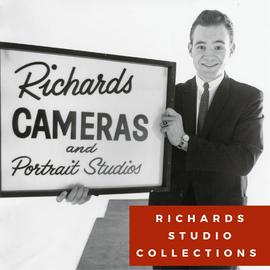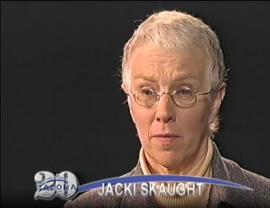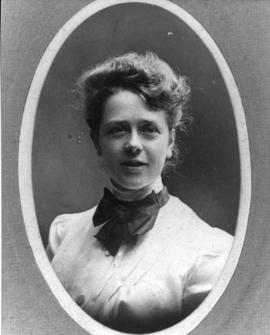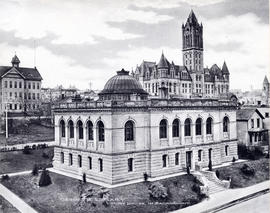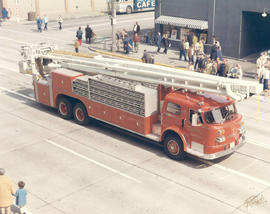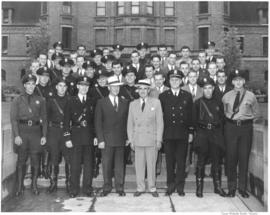Jacqueline Noel was City of Tacoma Librarian from 1924 until her retirement in 1943. She was born in Washington, D.C., on June 28, 1880, to Jacob Edmund Noel and Eleanor Fresneau Leadbeater Noel. Jacqueline Noel graduated in 1913 from the Library School of Pratt Institute in Brooklyn, N.Y. She would continue to donate to the Pratt Institute throughout her life. Before joining the Tacoma Public Library staff in July 1924 as an assistant in the reference department, she was an assistant librarian in La Grande and Portland, Oregon.
While serving with the Tacoma Public Library, Jacqueline Noel became the Head of the Reference Department and was elected as the librarian to succeed John Kaiser. Jacqueline Noel is credited with expanding the branches of the Tacoma Public Library. She obtained the funds to build the McCormick and Mottet branches by raising donations from citizens. From 1938 to 1941, Jacqueline and the Tacoma Public Library worked with the Works Project Administration. She played an active role in the Washington Library Association.
Tacoma confectioner Harry Brown (1893-1960) created a butter-crunch toffee covered in milk chocolate and chopped almonds in 1923. Henry Brown then passed out samples of the candy to Tacoma residents. At the Tacoma candy company Brown & Haley, company lore credits Jacqueline Noel with the name Almond Roca. The name came about because of the hard crunch when eating the candy. Furthermore, most almonds were imported from Spain, and "Roca" is a Spanish word for rock.
Jacqueline Noel was an active member of numerous organizations. She was a member of the American Library Association and had previously served as vice president of the Pacific Northwest Library Association. During the American Library Association's 1933 conference in Chicago, Jacqueline presented a paper describing the business and technical books held in the reference library, which Tacoma citizens used widely. She had also participated in the North End Shakespeare Club. She was a past regent of the Elizabeth Forey Chapter of the Daughters of the American Revolution and a member of the Huguenot Society of America. Jacqueline Noel passed away in Tacoma, WA, on May 19, 1964.
Noel Family
Noel, Edmund Jacob:
Jacqueline's father, Jacob Edmund Noel, was born in Cumberland County, PA, on January 25, 1847. His grandfather immigrated to America after serving in Napoleon's army and would later die during his service in the War of 1812. Jacob Noel's father was a captain of the Pennsylvania volunteers during the Civil War. Jacob served as a drummer boy early during the conflict; however, his father obtained an appointment in West Point. He would graduate from West Point in 1865. His class was sent out on a gunboat at the naval academy after the Confederate cruiser Florida off the Long Island Sound.
Jacob spent twenty-six years in the Navy, where he rose to senior lieutenant commander. From 1871-1872 he participated in the first surveys of the Nicaragua canal route, and from 1872-1875, he led an investigation into the dangerous aspects of navigation. He married Eleanor F. Leadbeater on March 18, 1879, in New York City.
In 1889 the Noel family moved to Tacoma, WA, where Jacob Noel took up civil engineering. He served as deputy county engineer for two years, and for eight years, he served as the county engineer for Pierce County. Later, he began a private practice in 1912 and focused his energy on Masonic service. He became a freemason in Lisbon, Portugal, in July 1867. He died in Tacoma, WA, in 1918.
Noel, Fresneau Eleanor:
Eleanor F. Noel nee’ Leadbeater was born to Edward H. Leadbeater and Lucy S. Dodge around1857 in New York. She would marry Jacob Noel on March 18, 1879, in New York City. They would go on to have two daughters together, Jacqueline and Anita. She had a deep interest in family genealogy and became a member of the Daughters of the American Revolution on January 2, 1896. She died in Tacoma, WA on October 15, 1924.
Mason Family
Mason, Anita (Noel):
Jacqueline’s younger sister Anita was born to Jacob and Eleanor Noel in 1885. She would graduate from Tacoma High School on June 6, 1902. On July 17, 1907, Anita married Thomas Wilson Mason with her sister as a witness. Anita and Thomas had one son, Thomas E. Mason (Teddy), born on June 12, 1914. She passed away in Tacoma, WA, on June 22, 1964.
Mason, Wilson Thomas:
Thomas W. Mason came to Tacoma, WA, in 1888 with his parents, John Quincy Mason and Virginia Murdoch Mason. Thomas was born in 1883 in Missouri. He attended Tacoma High School and later worked at the West Coast Grocery Company with Charles C. Hyde, the founder. Thomas W. Mason also worked with the Northern Pacific Railroad engineering department during the Kalama to Vancouver line construction. After marrying Anita Noel on July 17, 1907, they homesteaded in Flathead County, MT. He joined an irrigation project workforce. Later, he worked at various smelters in Tacoma, WA, Great Falls, MT, and Sudbury, Ontario. Thomas W. Mason also worked at the Pierce County division of the Standard Oil Company and retired from the Pacific Wax Paper company based in Seattle, where he was secretary-treasure for ten years. Following retirement, he formed Mason Sales of Tacoma. He passed away on January 6, 1950.
Mason, Edward Thomas (Teddy):
Jacqueline Noel’s nephew Thomas E. Mason or Teddy was born June 21, 1914, to Thomas W. Mason and Anita Mason nee’ Noel. Teddy graduated from Stadium High School in 1931 and received his undergraduate from Puget Sound. He was an employee of the United States Postal Service for 28 years. He died on December 12, 1986, in Tacoma, WA. In his will, Teddy donated $360,000 to the Tacoma Public Library in 1988 to honor his aunt Jacqueline.
